Daymond John has a revelation to make: Kevin O’Leary wears earplugs when the pair go clubbing in Miami. It’s an amazing tale that in some way sums up an amazing life, the perfect anecdote to capture what John has been and what he has become—a ‘90s hip-hop mainstay as the founder of FUBU, private-jetting with Diddy from Oscars after-parties, to a ‘00s investor in the mainstream, a “Shark Tank” star as comfortable in the company of Shawn Carter as he is Sean Parker.
Indeed, John has learned to straddle, if not bridge, his two worlds, if for no other reason than he so obviously belongs in both. When you can arrive at LIV with both Lil Wayne and “Mr. Wonderful” in the same entourage, you have entered uncharted cultural waters.
From his office on W. 39th St. in Manhattan, John discusses what’s left to achieve in life after turning 50, how the lessons of FUBU apply to building new brands today, why it’s important he learn TikTok, what you can tell about a person by how they play Monopoly, and the billion-dollar “Shark Tank” deal he didn’t make. “I don't regret any of the ones that got away,” he says. “But I wish I would’ve given him that money.”
(This interview has been edited and condensed for clarity.)
I of course know all about FUBU, and I’m a regular watcher of “Shark Tank,” but do you want to know the sneaky way that Daymond John comes up in my life sometimes?
John: Absolutely.
When I'm listening to music on shuffle, and the first two seconds of “Fatty Girl” comes on...
John: (Laughs) That’s so random. I love it.
Not to suggest that you aren't any longer, but with FUBU you were really ingrained at the top levels of hip-hop for some time. When you look back, what's your “peak hip-hop” story? In other words, what's the time when you were at the very height of your immersion in hip-hop culture?
John: One day I can fully remember was, me and Diddy decided to go to the Oscars to party in L.A. And that was in the height of the east coast-west coast challenges. Biggie had already died.
We hit L.A., and obviously he had an extremely large security team. We hopped in the limousine, and there was this really beautiful woman in the limousine—J-Lo, that later on the entire world would know. We went to the Oscars after-party. At that time, I didn't really know who they were, but Matt Damon and Ben Affleck had won. I was like, \"Who the hell are these kids?”
We had a great time, and we partied that night. I was like, \"Holy crap. I'm literally at the Oscars after-party with all these people.\" I think we were done at 4 a.m. [Diddy] was performing in Boston the next day. We'd been up all day, literally up all day. He goes, \"Yeah, we're getting on the jet at 6 a.m.\" I'm like, \"No way in the world this guy's going to be on the jet at 6 a.m.”
I get to the airport at six, and he was there. We get on the plane—he falls out in the middle of the jet. Lies on the floor, arms twisted. We landed in Boston. He gets up. He probably slept for about three-and-a-half hours.
There is a police escort that takes us right to the Boston Garden. And he runs right on stage—I thought my work discipline was great. Right when the concert's over, at 11, he goes, \"Alright, I'm going to the after-party.” He said [to me], \"Let's go.\" And, I swear to you, I literally ran. I think I left my luggage. I ran out of the room to a cab and took my ass to the airport, and just waited for the first flight to get the hell out of Boston.
You grew up in Queens at a very unique time, adjacent to the birth of hip-hop—a culture which you certainly carved your share of. What does the entrepreneurial life of Daymond John look like if you were born in, say, Indiana?
John: It all depends on when you were born in Indiana. I think now the entrepreneurial life of anybody around the world looks very similar, based on where they are. I was just extremely fortunate to be born where I was at the time I was.
When we look at books like Outliers, which shows how [Bill] Gates and [Steve] Jobs and [Michael] Dell are all the exact same age because they're of that time when this computer stuff was coming around. And they were young enough to not have obligations, like a job, but old enough to understand and be able to basically mess around with this new thing of computers from the age of 16 to 20.
I grew up the same, because if you really look at all the industry people that are around now from that period of time—whether it's me, [Queen] Latifah, Birdman, Steve Stoute, or Jay-Z—we're all between 50 to 52 now, because we were all around 14 to 16 at the time.
Growing up in Queens, it was normal to me to see hip-hop, because we had Salt-N-Pepa and LL Cool J (pictured below, center, with John) and all these people just driving around. It was really normal in that little world, but it was absolutely abnormal everywhere else.
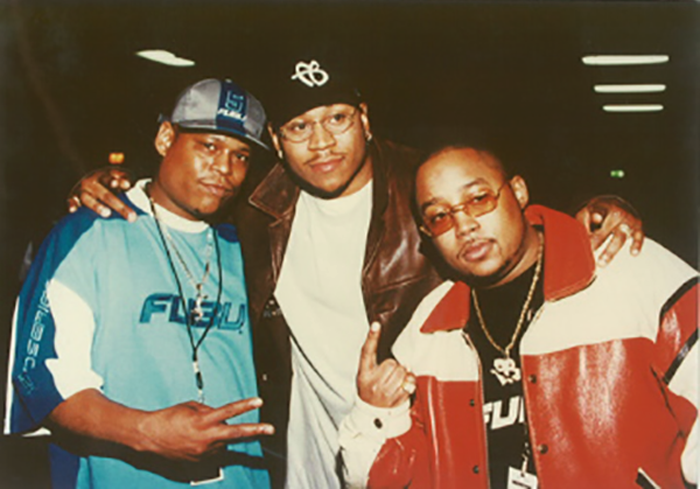
The building of the FUBU brand is something of a masterclass, in terms of how it grew from nothing to develop the kind of passion it inspired from its community. What other companies, either then or now, do you find yourselves impressed by for how they've built a brand from scratch?
John: Of course, I'm going to always say my guys at Bombas (author’s note: Bombas, which John became an investor in after the socks brand appeared on “Shark Tank” in 2014, was recently announced as the highest-grossing deal in the reality show’s history.) I mean, they built from scratch. MVMT Watches—I saw them just become rock stars. Leesa is a really, really great brand.
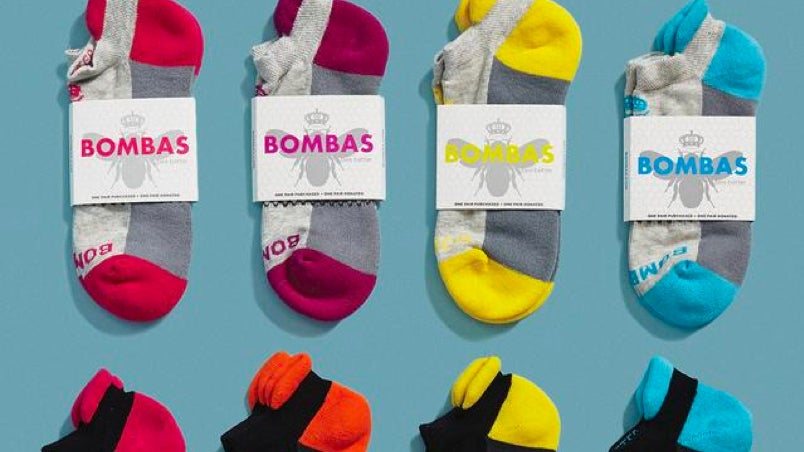
I'm glad you brought up Bombas. What DNA does a digitally-native company like Bombas share with a company like FUBU?
John: I think that the DNA the companies share is the initial way [Bombas co-founders] Dave [Heath] and Randy [Goldberg] started, which was knowing there was a common cause or problem they thought other people would relate to. (Author’s note: after learning that socks were the most requested item at homeless shelters, for every pair of socks Bombas sells the company donates another pair to those in need.)
Because, number one, they’re saying, \"Listen, I got an idea and I got a cause that I think we are neglecting.” Number two is, “Not only am I addressing this cause, but I'm going to make a superior product that I think people would like.”
That's similar to what I did with FUBU. The only way that we traditionally were able to support people of color was to wear kente cloth, because that symbolized when you were walking across the street that you believed in African or Nubian type of culture.
Now, kente cloth is green and purple and orange and blue and black. I hate to say it, but I don't want to wear a goddamn green outfit. Why do I need to be able to support this culture of hip-hop by wearing green? Why don't I just make products that are not only the color that we normally like, but also an excellent product that I’d put a lot of quality into?
And why don't I make it for a community that wants to solve a problem? What is the problem? The problem is, well, we're neglected by all other [clothing] makers. They don't like black people. They don't like inner-city kids. So why don't I make it for that community? And when they look at who made it for them, it's a guy, or a couple of guys, that look just like them.
Bombas has a charitable component right there at the outset—it’s baked into the business from the beginning. Where does social consciousness rank as a quality today in order for a brand to really succeed? Is it more or less important than when you were building FUBU?
John: I think social consciousness ranks in the top five. In 1997, 1998, FUBU had given away or distributed, I don't know, $3-, $5-, $10-million toward building basketball courts. We were sponsoring kids in schools. We were doing all that type of stuff. I didn't advertise or market it. There were no platforms to do that. And why should I do that?
However, it turned around on us. After the numbers came out of what [revenue] the company was doing annually, there was a big backlash. How dare these guys make money from the inner-city communities and they don't ever give back? Then we had to not only give back, but we had to start actually paying and advertising the fact that we were giving back. And it felt really dirty.
Today, the beautiful part is you don't have to do that. People know you from social media. They dig deep enough, especially if it's on your initial mission statement, trying to look and investigate who you are and what you stand for—if it's real or not.
It's really essential now because people today can buy a shirt, a sock, a cream, a drink from anybody. But when they find out that you are giving and you're helping somebody, I find that the consumer today, instead of saying, \"I gave at the office” at the end of the year, they say, \"I've given to 100 different causes over the course of the year, because every time I buy this, it helps clean up our oceans.”
This didn't happen with Bombas, but I'm curious: How would a fast-rising company like that plateau? Sometimes we see this, where a company is a hit, it connects to consumers with a great product or great idea, but eventually it kind of peters out. What are the specific points where a brand could lose its forward momentum like that?
John: Usually, the things that I've seen are, the company loses its focus on what the mission was that it set out with. It starts becoming really big, and they start looking purely at the numbers, and they start making bad decisions according to the numbers. Meaning: They can increase sales here by servicing this market, and then they take their eyes off the ball of the market that they're serving. Or they go, \"We can cut some corners here and reduce quality.\"
Another point is: If management doesn't let people become a work intrapreneur within the company, and come up with their own ideas and reward them for that. If they don't do that, then sometimes they subject themselves to not allowing innovation.
And the last one would be: If you don't diversify your staff, from age to gender to beliefs, as well as your thinking, that can also corrode your brand from the inside out.
I imagine people approach you often for business advice. What is the last thing you asked for business advice on?
John: I ask every day. I mean, the last thing I've been asking is how to operate TikTok.
What would be a theoretical business application that you’re curious about for TikTok?
John: Well, you’ve got to look at who my consumer is. My consumer is [age] 5 to 50, literally. I find that LinkedIn is really great, and Instagram is really great, and so is Twitter. But my consumer right now is potentially in college, and, if you blink your eye, in another 10 years they're going to be 28 years old and they're out there acquiring my books, my curriculums, my motivational speaking.
I need to be able to talk to them at the level they are at, but yet stay true to my DNA of who I am as a motivator or an investor. I don't know how many people who are anywhere from 22 to 30 right now that are creating the next game-changing application or company. They're looking at all of these people, angel investors or venture capitalists, and going, \"That guy doesn't get it.\" Or instead, [they may say about me]: “He's on TikTok, or he's on various platforms. Maybe we should go check out Mr. John and his corporation for an investment or strategic partnership.”
Will TikTok be around forever? I have no idea. But it's never going to be a waste of my time because I'll learn that application and whatever the next one is. I'll learn it because now I have a direct line of communication.
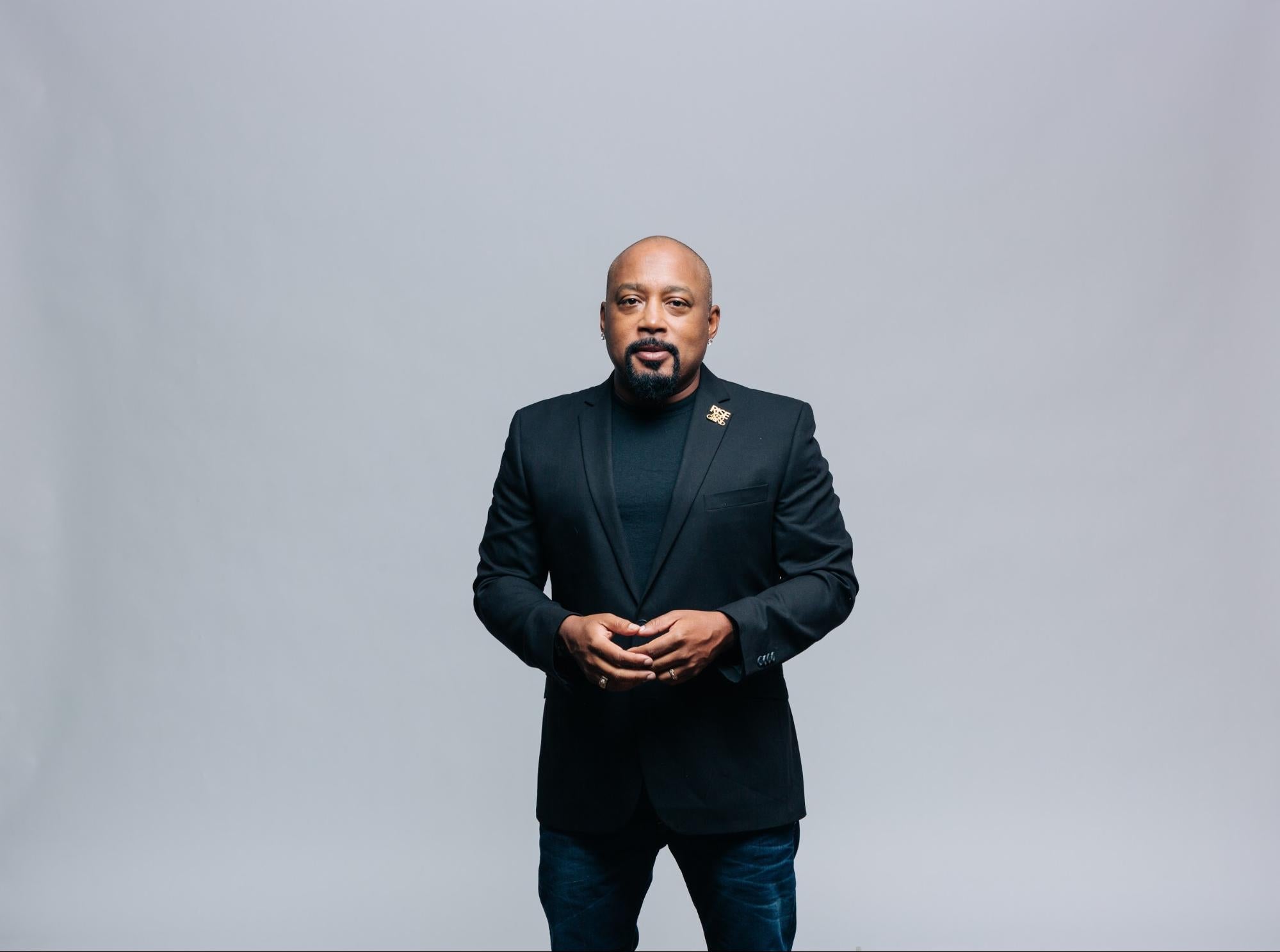
You turned 50 last year. In the larger picture of your life in business, what gives you the greatest satisfaction that you've already achieved?
John: To know that a young man with no resources and no famous last name has been able to get to this point where—listen, for one-third of my adult life I've been on a major network, showing people all over the world that becoming a successful businessperson has nothing to do with color or gender, race or creed, any of those things. That's important to me.
Number two was that I did not become a one-hit wonder. I challenged myself, and I went from having one successful clothing brand to various successful clothing brands. Then being a motivational speaker, and a consultant to people. And becoming a TV personality, and traveling the world with [U.S.] presidents.
When I was about 32 years old, I had a fear that I’d hit the lotto and now I'm done—I'm never going to be able to do another thing again. But I showed myself that I can keep doing it. I challenged myself again, and I won again.
What nags at you that there's still left to do?
John: To be able to give more of my physical time, whether it's to people or whether it's to charitable work. I'm pretty happy with where I am now, knowing that I'll use my public stage to go out there and bring attention to some things that really need to be addressed. However, I look at everyday people who are giving way more, and I have no excuse. I'll go to places where I see hurricanes hit, and I'll see people who have regular jobs in America who've decided to give them up for months just to help people. And I'll say to myself, “How can I do more?”
One of your favorite books you’ve spoken about is Rich Dad Poor Dad. You've been rather open about the financial challenges you had growing up. What does that book mean to you now, as a father of three, having experienced quite radically both perspectives of having money and not having money?
John: I have a challenge in that, because even though in understanding Rich Dad Poor Dad—the importance of cash flow and residual income and working harder and smarter—I find that in my business I have applied that. But even though I read Rich Dad Poor Dad, and I love it, I had financial challenges four or five separate times until I was in the beginning of my 30s. When I was in my early 30s, I turned around and realized that I had blown $20 million.
But thank God that, even though I blew that money, I had a lot more than that. I had other forms of income coming in that I did not intentionally try to have. I had, what, six or seven houses when I was about 30 years old? And I bought them for vanity reasons. I needed a whole bunch of houses and they had to be in the best places. Around 2006, I decided I was going to downsize—that I was going to sell them all. Of course, 2006, 2007, at the top of the [housing] market—let's say I paid $2 million per house. I sold it for $8 million.
I turned around and I made way more money than I lost, but I did that purely by mistake. And then I turned back around and said to myself, “What the hell am I doing?” I should be applying more of the Rich Dad, Poor Dad theories and practices. Now, it's hard for me to say how I've been able to teach that when it comes to my daughters and my family. I still have a challenge.
What kind of conversations about money do you have with your children (author’s note: John has three daughters—Destiny, Yasmeen, and Minka)? What kind of lessons do you try to impart, considering the trajectory of wealth across your own life?
John: Initially, when they were kids, whenever people gave them stuff at Christmas, I would have them try to put it into some kind of financial instrument to see how much they have at the end of the year. I would match what money they have. Anything that they wanted to buy—a car—they would have to earn half of it, and I'd match the other half of it.
One of my friends said to me, \"So you're doing the matching thing with your daughter, right? Your daughter's working [a job]?\" I said, \"Yeah.\" Well, he says, \"She's 16 years old. She's going to save $2,000. You're going to give her a $4,000 car?\" And he said, \"A couple of choices here. Get her a $4,000 car, and she will be in a piece of sh-t. If she gets into an accident, she most likely could be hurt.”
And then he says, “Or you could give her a decent car, where you know you'll have peace of mind that she's going to be okay. Or why don't you take her to get a loan to get a more expensive car, and now you're teaching her about debt?” Which one would you do as a father?
I run across these challenges all the time. Last week, I came over to [Shark Group president] Ted [Kingsbery] and I was like, \"You know what, Ted? My daughters are old enough where I'm going to ask them every summer, let's all—my daughters, my wife, and me—let's listen to two audio books, financial books, over the summer.\"
You have a new book yourself coming out, Powershift. You interview Kris Jenner, who sits at the top of a family business empire that has become increasingly impossible to ignore. What kind of things do you learn from Kris?
John: The reason I reached out to Kris is because I worked with her and the girls at a very early stage in their life (author’s note: in 2009, John appeared as a mentor to Khloe Kardashian on the reality show \"Keeping Up With The Kardashians.\")
Kris' theory was always, \"Listen, we got 15 minutes of fame, but we're on our 16th minute.\" She was very much like my mentality of, “I started one clothing line, and guess what? I got struck by lightning and I'm never going to start again. I could potentially be a loser unless I get my ass in gear.”
What I find fascinating about Kris and the Kardashian-Jenner family is: They don't rap, sing, dance, do anything athletic, or anything else like that. However, they've been able to find the common interest that other people have with them. They've been able to be very transparent about their lives, continually grow their business, and stay on course. As much as it looks like it's chaos, it's organized chaos.
And they've been able to also span way past the success of so many other people in regards to longevity, in regards to platforms they're using, and in regards to converting their intellectual property. How do you go from three girls that nobody knows to now a span of a family of 20 that everybody knows? I needed to know the DNA on doing that.
Can we finish up here with a few “Shark Tank” lightning round questions?
John: Yeah.
Would “Shark Tank” have ever been the right forum for a brand like FUBU?
John: 100%. I think that it would have been, absolutely. It would've been great for FUBU.
What's the deal made by another shark you're most impressed by?
John: Scrub Daddy that Lori [Greiner] did. Or the Squatty Potty that Lori did. Or the Drop Stop that Lori did. I joke about it, but I'm serious: If it's plastic and it's $20, Lori is going to sell it.
Who's the toughest shark to negotiate against?
John: They all are very tough depending on their field and when you're negotiating against them. Because when they have their fangs out, because they think something is a great opportunity for them and the entrepreneur, you can't get in the way of one of those sharks. And if it's an area that they're an expert in, it’s very, very tough.
If there's technology and [Mark] Cuban is all over it, it's very hard. If it's tech and Robert [Herjavec]’s all over it, it's very hard. If it's something creative, and food, Barbara [Corcoran]'s become very difficult to fight with on it. Kevin [O’Leary], believe it or not, if it's in the gifting industry—weddings and stuff like that—he's challenging. And Lori, like I said, those products. They're all very difficult to negotiate against.
And then you're sitting there looking at Mark Cuban [next to you]. Well, how am I going to compete against Mark Cuban with money? He’s hit a bigger oil well than me. Now I have to find a way to make you feel that I add more value. What am I going to say? Well, listen, Mark Cuban's too busy. I got a lot of time on my hands. I'm ready for you. I can work with you. It's mental judo dealing with these guys. Really, it made me step my game up.
And that's why I'm literally the best on the show with my Bombas deal! (Laughs) Just make sure that, no matter how many compliments I give them, [it’s known that] I am officially number one. I want you to understand also that I'm on half the shows [as the other sharks]. That means that they had twice the chance to beat me, and I've superseded all of them.
Do you ever wave that in their faces?
John: I will, but I'm just saying: If you go bobbing for apples, and you go in 30 times, I only go in 15 but I pull out a pumpkin. (Laughs)
What's the “Shark Tank” deal that got away?
John: Ring (author’s note: the video home security company, then known as Doorbot, left the “Shark Tank” without a deal in 2013; in 2018, it sold to Amazon for more than $1 billion.) Jamie [Siminoff] says that he asked us for too much money coming in. I don't regret any of the ones that got away, but I wish I would’ve given him that money.
The sharks bicker a lot on the show. It’s often in good nature, but what's the one argument that actually got the most heated on set?
John: There's one argument that we had that Lori and I went in on—a company called Scholly. Robert and Cuban, because they're tech guys, they got pissed off and were acting like it was charity. And Lori and I felt that, not only was it a good cause, but the entrepreneur already had shown critical concept on knowing how to get scholarships, and we believed he was an entrepreneur. I've been guilty of the same thing, because Robert and Cuban probably knew too much about tech. They were too critical on it, and felt not enough information was there during the pitch.
But they got pissed off. They said it was charity, but that's their problem. Lori and I went in on the deal, and the deal has been very successful. That was the one that I think got the most heated with us, where they left the room. We didn't take it home with us, but we still had a little bit more of a debate later on about it, and we usually don't have a debate after the camera stops.
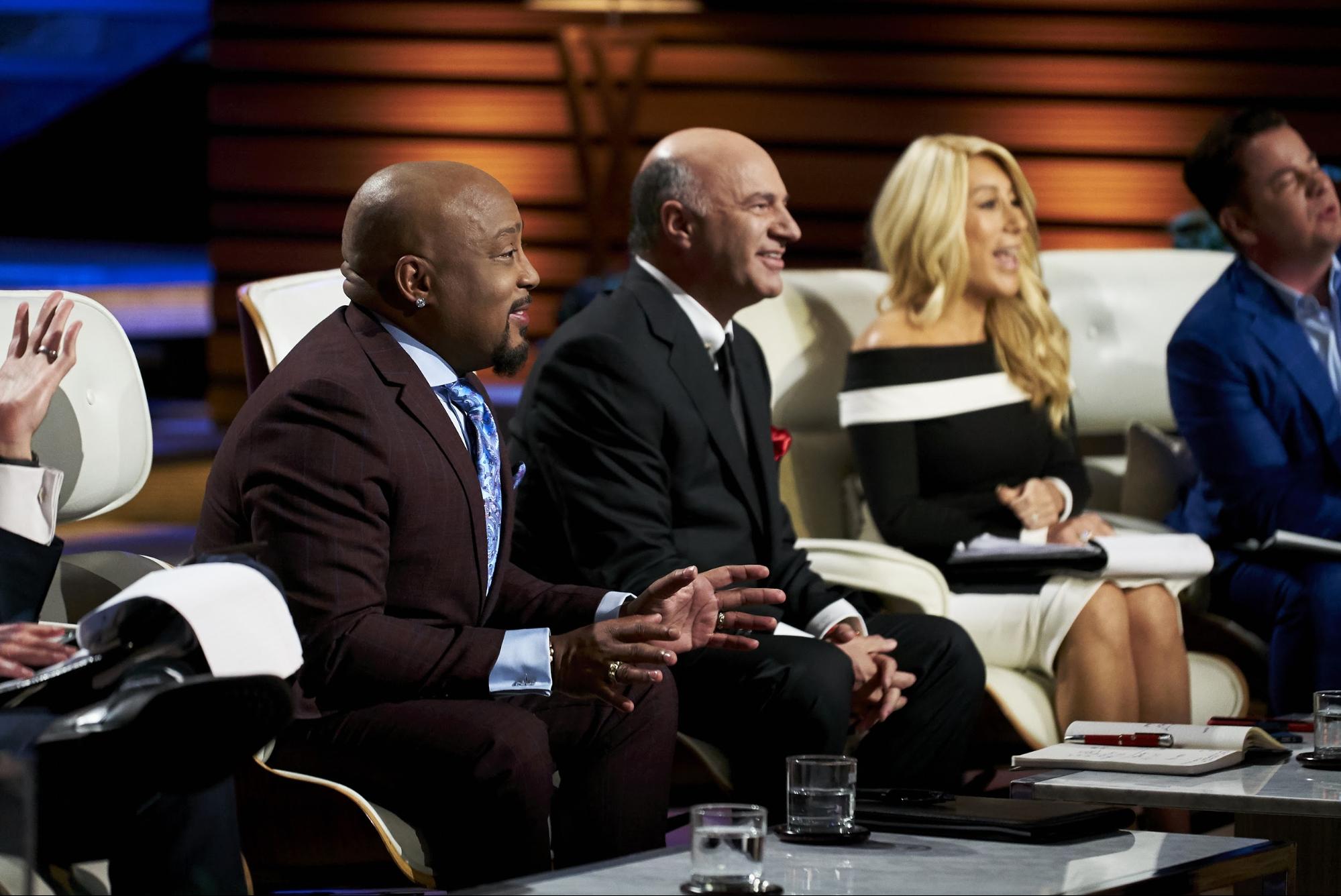
There’s an old estimate floating around that you’d put about $8.6 million of your own money up in “Shark Tank” deals. What do you guess that number is today?
John: I would say $12 million, but I would say so only because we got to take into consideration my team, my time and action, my legal behind it—and there's a lot of other things. I’d say that 20-25% of an investment is phantom, meaning that there are a lot of other resources being spent. That is part of an investment that the entrepreneur doesn't get themselves. Sometimes it can eat up a lot of your time.
How have you fared on that $12 million?
John: I would say that I'm up. I'm definitely up.
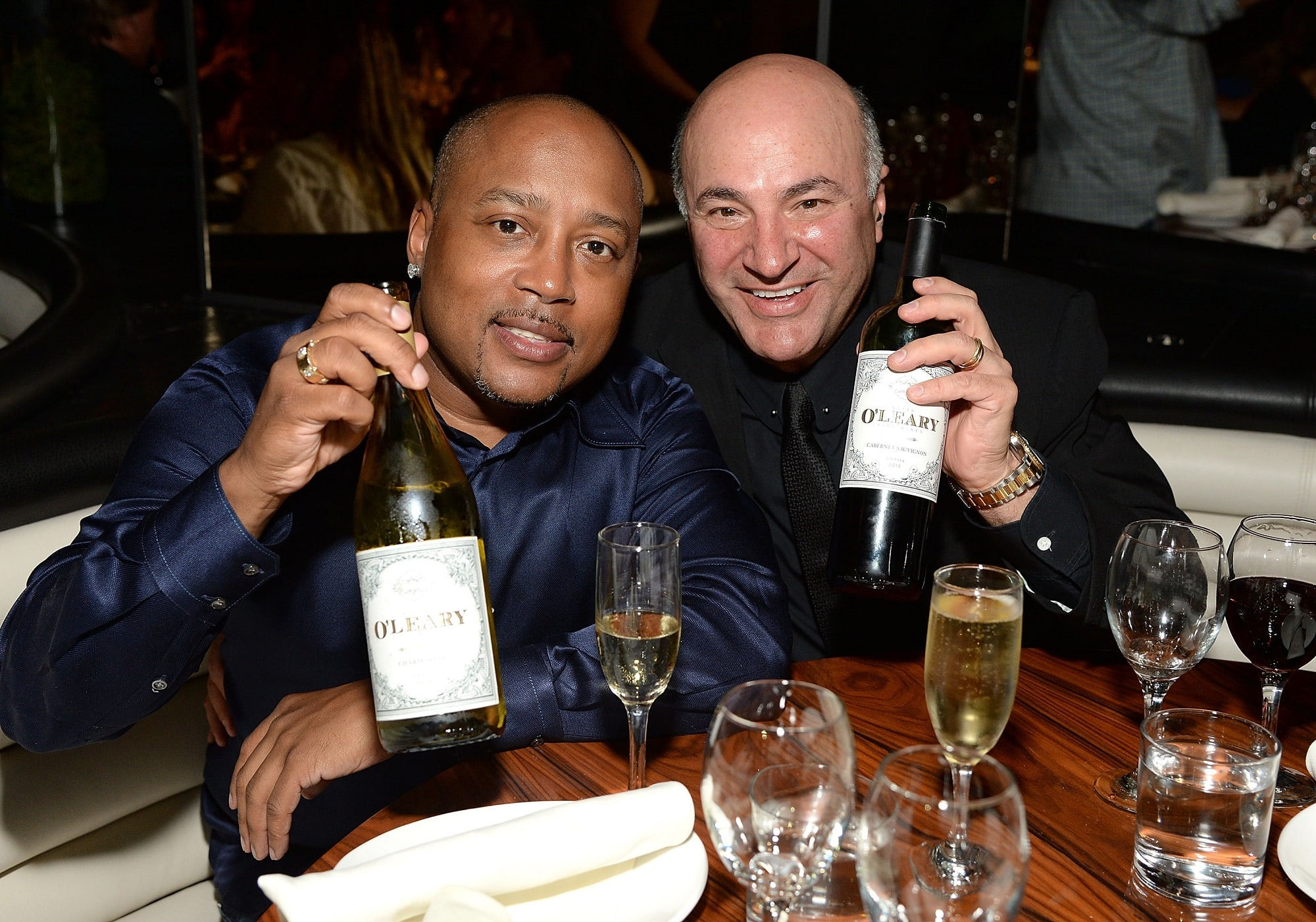
Is it true you take Kevin O'Leary (pictured above, right) to the clubs in Miami?
John: (Laughs) Yes. I have taken him there. I've taken him on hip-hop nights to club LIV. I think I came there with Lil Wayne one night, Diddy another. When I took [O’Leary] in, I believe he was the only bald white male in there. And, for some reason, the lights were shining off his head, and when he was walking by and everybody was standing on the booths, they were all rubbing his head going, \"Mr. Wonderful! Mr. Wonderful!\" He was as happy as he could be.
Please tell me it's also true that he wears earplugs in there.
John: Yes. (Laughs) He does!
What do Lil Wayne and Diddy think about Kevin O'Leary wearing earplugs in a club?
John: That he’s being a responsible senior. (Laughs) Listen, I swear to you, it looked like a 200-pound parakeet just walking into a club and everybody was rubbing his head. It was amazing.
Very last thing: You have posited that you can really tell something about a person by how they play Monopoly—it really reveals things about their character. Can you sum up your theory on what Monopoly shows about a person?
John: It shows almost everything about a person. We're dealing with play money, but your guards are let down after four hours of negotiating with people. And you see the people who complain, the people who have a strong will to win, the people who will figure things out. The people who claim, \"Oh, you're teaming up on me.\" You see their morals, everything about them.
Now, in the first game, that's fine. But play it five times with the same group of people, or maybe interchange one or two of them, and you'll start to see people’s DNA just like on “Shark Tank.” You’ll know the bottom feeders like Kevin O'Leary. You’ll know the wild cowboys like Mark Cuban. And you’ll know the guy who's going to let you down nice with his soft, blue eyes and wavy hair, like Robert. It'll come out of people.
Want more from Daymond John?
Get access to Shopify Academy's exclusive goal-setting course with Daymond John.
Read more
- Tamara Mellon On the New Luxury, and Why the Days of Brands Staying Neutral Are Over
- Ross Bailey on Moving IRL Online, and What Retail’s Comeback Will Look Like
- Roth Martin on Sustainability, Imitators, and Taking Rothy’s Deeper Into Retail
- Yale Economist K. Sudhir on the Future of Work, and How Retailers Survive a Recession
- Hugo Engel on Leon’s COVID-19 Pivot with Feed Britain and How Restaurants Can Embrace Technology
- 11 Ecommerce Checkout Best Practices: Improve the Checkout Experience and Increase Conversions
- What 1-Click Checkout Can Do for Your Small Business
- How to Optimize Your Mobile Checkout Flow
- Composable Commerce: What It Means and if It’s Right for Your Business


